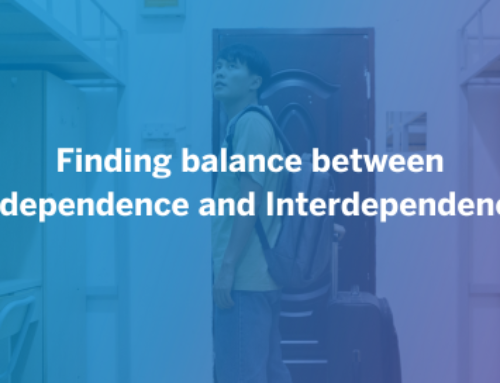
Early detection is the essential and primary focus for the prevention of drug addiction. It is the most important factor in the treatment of addiction in our society. While there is a massive billion-dollar effort to improve, research, and develop treatment programming for individuals with substance use disorders, the reality remains that addiction is an unthinkably difficult disease to treat. Like many conditions comprising various stages of severity, if addiction can’t be caught early, individuals have progressed to a stage that is fatal. To illustrate, research has demonstrated that less than 42% of people who enter addiction rehabilitation facilities complete their treatment. Only 1 in 4 individuals with alcohol use disorders are able to reduce their consumption for more than a year. Relapse rates, which are conservatively estimated in the interest of rehabilitation centers, are nevertheless usually found to be between 40-60% percent. The majority of these statistics rely on self-reports, which are unlikely to be completed by an individual who has relapsed and even less likely to be answered honestly by an active drug addict. Honest treatment success statistics are harrowing. Additionally, NIH studies have suggested that 90% of people who struggle with substance use disorders are ineligible for treatment due to its unaffordable cost and lack of coverage under Medicare/Medicaid.
If existing treatment for stages 3 through 5 of a disease yields a success rate of less than 50% and costs an average of $700 a day, the focus of effective treatment efforts should shift to detection methods that can catch the disease in stages 1 and 2. The call for this need is currently being met by efforts from non-profits organization and educational campaigns to implement prevention programming in schools, educate families and counselors, and promote the initiation of dialogue around drug use. There is also a significant and growing body of research investigating and disseminating protective factors for substance abuse within the home, school, and social life of youth. In line with such efforts, our primary goal at Living Skills in the Schools is to coordinate with schools to provide a substantial curriculum for students to learn about the genuine, research-based impacts of substance use. However, beyond this prevention effort, we also seek to improve the efficacy and reach of the prevention effort.
In our intensive work with schools in Palm Beach County, we have discovered the great need for early detection. When addressing students, we find that many are receptive, curious, and risk-weary; while others who have clearly begun to use regularly are obstinate and defiant. They lose the ability to comprehend the truth of a drug’s harmful nature once the tricky disease of addiction has set in. Addiction deceivingly induces those afflicted to not want to stop, believing all along that they could stop if they tried. How, then, they think, could this drug be harmful and addictive? It becomes quite visible to our presenters that the weight of our message is felt primarily by students who were unsure about drugs, worried about them, or perhaps already aware they were struggling. To the many who seem closed off to our message, we at LSIS feel they need to be addressed earlier. So how can this be done?
It is important to emphasize the significance of behavior change and social groups as the most prominent factors in early detection. These are among the most well-known warning signs, and are nevertheless frequently overlooked. I have seen the process of overlooking these signs. My parents and family members witnessed significant changes in my behavior and social groups without seeing these warning signs for what they were, fueled both by ignorance and the notion that it “will never be my son.” Any teacher or student in my school could’ve accurately pointed to the friend group that was most likely to use drugs. It is not hard to see the friends who have begun practicing rebelliousness and escapism. This was an opportunity for my family to express their concern, to become appropriately curious and involved. How to do this, and if to do it, they did not know. This is a process which can be researched and taught.
As documented in numerous studies, behavior changes in students can be subtle and may not always manifest in overt actions such as skipping school, failing tests, and showing defiance and dishonesty. These obvious behaviors are indeed warning signs, but they may appear only after the less apparent ones have gone undetected. Therefore, it is crucial to identify the early warning signs of behavior changes before they escalate. The initial indicators of behavioral changes are often more nuanced and take the form of a strong desire to emulate the behaviors and language of peers. Students with a proclivity to conform to their peer group and idolize their classmates are at risk. Recognizing these early signs can prompt appropriate conversations with family members and other caregivers, which can help prevent more severe behaviors from developing, and guide the child to think more critically about the relationships they are forming. Parents should know to take measures when observing these traits in their children. These measures need not always be drug focused. With awareness of their child’s risk, parents can engage in a focused effort to promote independence and self-confidence in their child, while challenging the in-groups that he sees value in.
Furthermore, students who struggle with maintaining personal boundaries are also more likely to engage in inappropriate behaviors as they age. This is a common concern for parents and teachers alike, as it can lead to more significant problems later on. For students who have been diagnosed with ADHD or another externalizing disorder at a young age, the risks of behavioral changes are even higher, and they require extra support and attention. It is therefore essential to pay attention to these early warning signs of behavioral changes and intervene early to prevent them from escalating into more severe issues. By identifying these signs early, parents, educators, and caregivers can help students to recognize the danger.
My parents were well-educated, involved, and engaged in my life, but were still unaware of the necessity of addressing these behaviors at an early age. With assistance and guidance, my parents would’ve seen many opportunities for intervention. When I switched from a more private, sheltered school to a larger middle/high school, when I began admitting my struggles with compulsive lying, when they noticed a notable change in the type of friend group I engaged with. All of these could have been helpful conversation starters, that may have led my parents to warn me about the exact behaviors I ended up engaging in, allowing for a return to this conversation if they noticed a concerning behavior. Most importantly, they would’ve been instructed to have a level of healthy skepticism, to genuinely and thoroughly investigate this risk in my life, rather than operate under the assumption that it couldn’t be ‘their son.’
Early detection has systems-level, wide-ranging implications. As we continue to struggle to treat addiction, billions of dollars continue to be spent on failing to treat a disease that could have possibly been prevented. On the way to treatment and even the unlikely conclusion of sobriety, an addict brings down dozens of friends with them, convincing others whose risks haven’t been addressed to engage in the same behavior. Despairing families, illegal and defiant behavior, and sometimes horrifying immoral behavior can’t be dealt with in rehab, as rehab is usually the final stop. The toll on society has been dealt. Properly addressing the disease of addiction in all its implications requires a parallel effort to effectively address the early stages of this condition. We have learned quite a bit since the days of ‘just say no.’ We’ve studied and repeatedly demonstrated the power of protective factors in the family, risk factors for children, and effective ways for families and counselors to address these issues long before they arise to their full levels of extremity.
Living Skills in the Schools puts a significant emphasis on programming targeting the education of family members and counselors. While we are proud of our work, we deeply feel the need for a larger effort. The process of educating parents about these signs and providing them with the guidance to discuss these matters in an effective manner needs to be part of a much larger and more cohesive effort. More needs to be done. It is time to prioritize early detection efforts and work together to prevent addiction from taking hold in our schools and in our society.
By: Danny Z
Danny is a in house LSIS Prevention Speaker.








Leave A Comment